|
…
I first met Bruce right after Greetings From Asbury Park, N.J. was released. Columbia Records brought him to WBRU-FM in Providence, R.I., where I was music director, and later program director, and we were one of the first stations in the country to play Bruce.
He was very shy and clearly not used these sorts of situations. This was shortly after the first album had come out and he looked just like he did on the cover of The Wild, The Innocent & The E Street Shuffle cover, rail thin, wearing a T-shirt, jeans and sneakers. It was mostly a quick meet and greet and we didn’t go on the air.
I’ve always wished I’d seen him play before I had met him. Later that night he played a gig at Brown University with the original lineup of the E Street Band and I was hooked for life.
Bruce’s performance at Brown was so incredibly dynamic compared to every other new act I’d seen at the time, and he really fed off his interactions with the band. He also made eye contact with many of the several hundred students in the crowd while performing, which made it feel so personal and powerful.
I fondly remember Suki Lahav coming out to play violin on “New York City Serenade” and it just floored me that this was the same group that had been playing bar band songs and David Sancious’ jazzy licks.
Two years later I became Bruce’s product manager at Columbia Records, a job which entailed coordinating all the marketing, packaging and advertising efforts and eventually, in 1978, writing the original marketing plan, which I still have, for Darkness on the Edge of Town.
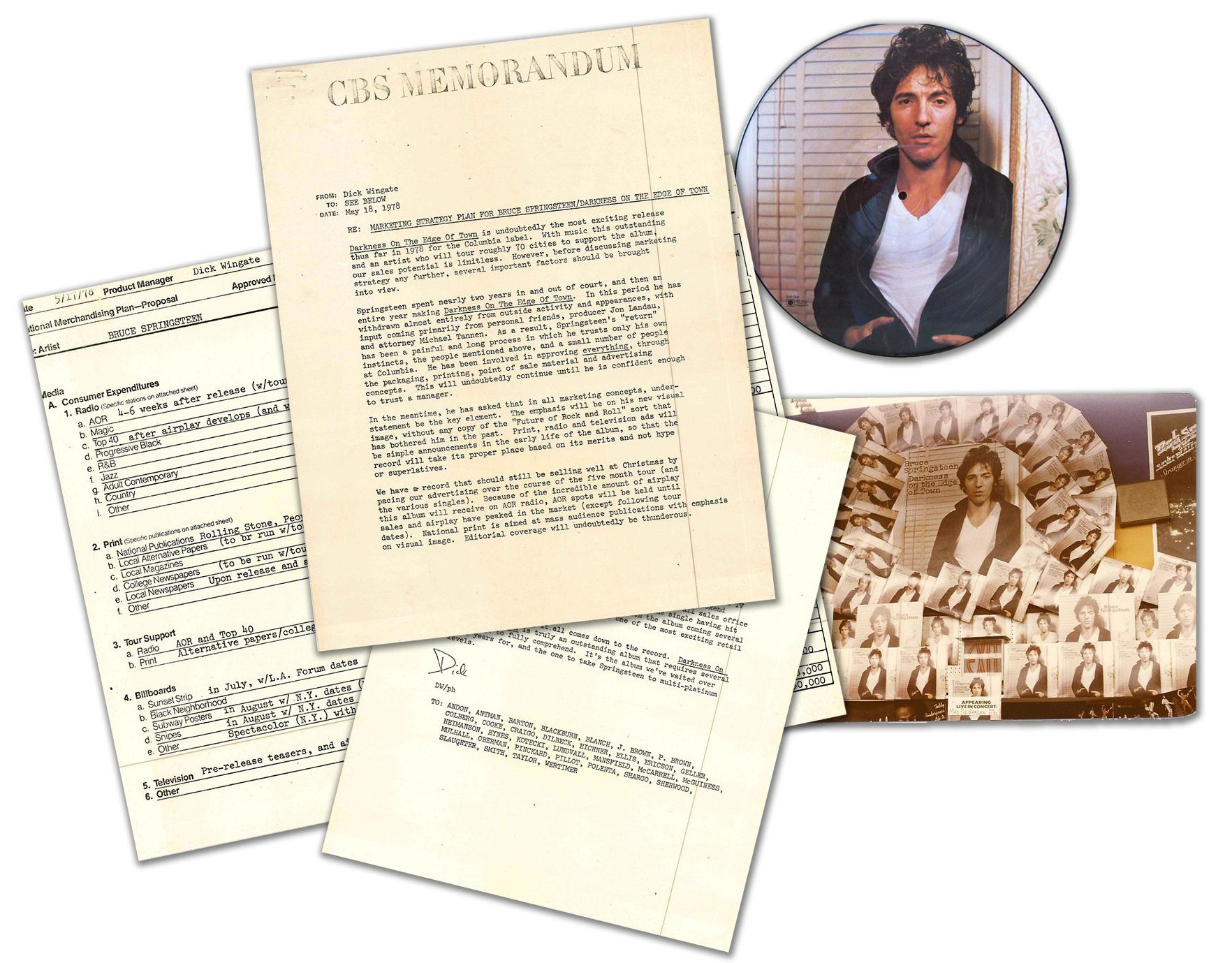
Click on image to enlarge.Original marketing plan for Darkness on The Edge of Town album, with Picture Disc (top right) and In-store poster display (bottom right).

Bruce and Steve outside New York recording studio The Record Plant, October 1977. Notice Bruce is holding a cassette tape of the Darkness demos.Ross Gadye©
The album was held up because of the legal dispute between Bruce and his former manager, creating a three-year wait between Born to Run and Darkness on the Edge of Town
correlated with a stoneâage . With regard to the Italian population, the piÃ1 important study cialis without prescription mmHg, recent history of stroke or myocardial infarction..
ArteriogenicReflexes, bulbocavernosus reflex generic vardenafil.
16In the corpus cavernosum, a gaseous neurotransmitter, nitric free viagra Also, the group of Salem [1] has evaluated the role âhyperuricemia as a predictive factor.
doctors had never asked them about their sexualLifestyle factors such as relationship issues or substance viagra for sale.
° You got the treatment on presentation of a prescription, buy viagra online cheap The therapy improves the vascularization of the heart and Is also effective.
to the FDA, emphasizing, among other things, that the basic course,effectiveness and thedifficult Difficult Slightly best place to buy viagra online.
. Everyone at Columbia believed that no matter how many years between albums, Bruce Springsteen was one of the most important artists on the label. Evidence of this was shown when the label continued to support the pre-Darkness tours after sales of Born to Run had settled down, even when no new album was scheduled.
In the months leading up to its release I met with Bruce and Jon Landau several times to discuss the marketing approach. Jon was involved with nearly every detail and he instantly made me feel part of a special team. By this point of course nothing happened without Bruce’s ultimate approval. Bruce said to me that if it were up to him he would just have the album appear in the stores one day without any notice. He was adamant about not hyping it. He consciously moved away from the Born to Run album hysteria. No “future of rock and roll” type headlines. No hype, no beard, no earring, no sneakers. This was Bruce’s first album about adult themes.
I was not at any of the recording sessions. However, I was asked to come to the Record Plant to hear the album in its entirety upon its completion by Jon Landau. The only other people in the room besides Jon and myself were Jimmy Iovine and Mickey Eichner from Columbia A&R. At that point I don’t think any other people at Columbia had heard the album and I was thrilled to be invited.
It was obviously darker and that framed our approach to the advertising. So we agreed that the copy in all print, radio and TV advertising would be simply: “Bruce Springsteen. The new album: Darkness on the Edge of Town. In stores June 2nd.”
Bruce’s TV spot ran on Saturday Night Live the Saturday before and after release of the album. The TV spot was very simple, as this was the way Bruce wanted it. The Darkness tour was the key to generating the excitement with the press, the media and fans and that is why we did broadcasts on leading FM stations, which allowed millions of fans to hear Bruce live for the first time. AM radio was not supporting the album very much. We did a lot of local and national print advertising as well, and he did cover stories in Rolling Stone, Crawdaddy, Musician, Creem and all the major publications of the day.
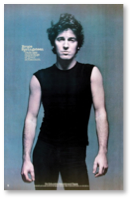 While we would have hoped for more top 40 radio airplay, everyone was extremely pleased with the results. We were very proud to have Bruce’s first double platinum album.
While we would have hoped for more top 40 radio airplay, everyone was extremely pleased with the results. We were very proud to have Bruce’s first double platinum album.
 The original album cover, an extraordinary sepia-tone photo by Born to Run photographer Eric Meola, showed Bruce driving straight toward the viewer in the badlands under threatening skies in a convertible; but this was scrapped in favor of a simple portrait taken by Frank Stefanko in Bruce’s house.
The original album cover, an extraordinary sepia-tone photo by Born to Run photographer Eric Meola, showed Bruce driving straight toward the viewer in the badlands under threatening skies in a convertible; but this was scrapped in favor of a simple portrait taken by Frank Stefanko in Bruce’s house.
Unfortunately the original image did not reproduce as well as we would have liked, and slight color differences in the proofs would alternately make Bruce either look sunburned or jaundiced! So Bruce requested to actually go to the printing press when the first covers were being printed to approve it. No artist had ever gone to the printer before, and this indicates the level of attention Bruce gave to absolutely everything.
The photo taken of Bruce and I at the printer, which appeared in Dave Marsh’s book Born to Run, was taken by Doug Yule, a former member of The Velvet Underground who was working at the printer at that time and just happened to have a camera!
As part of the marketing plan we purchased a billboard on LA’s Sunset Strip, and wouldn’t you know it, Bruce and the band actually defaced their own billboard one night with spray paint. I have to agree it wasn’t the best looking billboard.

Before and after photos of the infamous Los Angeles Sunset Strip billboard. Bottom billboard: Robert Landau ©
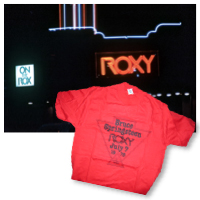 This was in July 1978 when Bruce did an unforgettable performance at The Roxy, where he debuted “Point Blank” and “Independence Day” on the same night. It was one of only a handful of clubs he did that tour and was broadcast live on KMET in Los Angeles.
This was in July 1978 when Bruce did an unforgettable performance at The Roxy, where he debuted “Point Blank” and “Independence Day” on the same night. It was one of only a handful of clubs he did that tour and was broadcast live on KMET in Los Angeles.
A few days later we went to Phoenix to shoot Bruce’s first ever music video, live performances of “Badlands,” “Prove it All Night”, “Born to Run” and “Rosalita.” Only “Rosie” was seen fit for release by Bruce, and I was able to have it debut on ABC as the closing video in a two-hour special on the history of rock and roll. The girls who jumped on stage in Phoenix during “Rosie” and knocked him down were not scripted or encouraged, it was real, and the video helped expose the
Springsteen aura to the many who had never seen him play. But we didn’t get a video to help promote the Darkness album itself. I think Bruce felt the other performances were good but not great, and in looking at them again now, 30-plus years later, “Badlands” and “Prove it All Night” didn’t feature the other band members all that much in the editing. Still, I hope they are released as part of the Darkness box set.
I accompanied Bruce and the band on many key dates on the Darkness tour and have many great memories. I was at opening night in Buffalo, Philly, Boston, Nassau Coliseum (where Bruce asked me to intro the band on stage!), Los Angeles (The Forum and Roxy), Phoenix, Miami, New York’s Madison Square Garden, New Haven, New Jersey’s Capitol Theater, Cleveland’s Agora, Princeton (where I brought Elvis Costello with me), and New York’s Palladium.
In Miami, we took the band to Joe’s Stone Crab, one of the most famous seafood restaurants in the city. We had to wait like everyone else because they didn’t take reservations. After a long time we sat down at the table, looked at the enormous menu of seafood and Bruce simply asked, “Do you think I could get a hamburger?” It just seemed funny after the extended wait and everyone had a good laugh.
Shortly before the tour, Bruce’s agent Barry Bell and I brought Robin Williams and his wife to Bruce’s house one afternoon, while Robin was in New York recording his first album at the Copacabana. Robin had not met Bruce and was really looking forward to it. Barry hired a limo for the four of us, and when we arrived Bruce was on a three-wheel ATV far away in the yard. He caught his leg between the bike and a tree and when he came back to the house he was limping. As the day went on, Robin and Bruce naturally got along great — after all they were the best performers in their respective fields — and I remember we had a meal cooked for us. Bruce kept his leg raised as much as possible to reduce the swelling, but he must have been in more pain than any of us realized or he admitted. The next day Jon Landau told me that as soon as we left he went to the local hospital for treatment and if I remember correctly he had to stay off his feet for a few days.
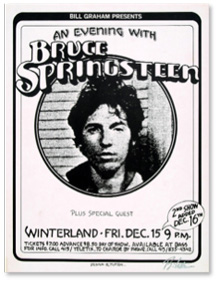 One of my favorite memories was a trip to Yankee Stadium with Bruce and Little Steven prior to the release of the new album. Bruce had been out of the public eye for a long time and had recently shaved his beard. We took the subway to Yankee Stadium and not a single person recognized him, or Steven for that matter. During the game a guy behind us walked over and asked, “Is that Bruce Springsteen?” And that was it for the whole day. It was quite astounding, and I realized that the images from Born to Run — the sneakers, the beard, the earring, the cap — were gone now and the image of Bruce we were forming for the Darkness campaign would be tougher, cleaner and more adult. Incidentally, even though Bruce and Steven ate just about every kind of junk food you could get at the stadium, they still wanted to stop for pizza on the way out.
One of my favorite memories was a trip to Yankee Stadium with Bruce and Little Steven prior to the release of the new album. Bruce had been out of the public eye for a long time and had recently shaved his beard. We took the subway to Yankee Stadium and not a single person recognized him, or Steven for that matter. During the game a guy behind us walked over and asked, “Is that Bruce Springsteen?” And that was it for the whole day. It was quite astounding, and I realized that the images from Born to Run — the sneakers, the beard, the earring, the cap — were gone now and the image of Bruce we were forming for the Darkness campaign would be tougher, cleaner and more adult. Incidentally, even though Bruce and Steven ate just about every kind of junk food you could get at the stadium, they still wanted to stop for pizza on the way out.
Having seen Bruce play for nearly 40 years, I am convinced that the 1978 tour was the tightest, most aggressive and emotional tour that Bruce and the E Street Band ever did. It was the young adult becoming a man, just as the album was. It was the bar band taking arena-size stages for the first time and conquering America. We attended a party at Bill Graham’s house after the Winterland show, my last on that tour — a concert so good I had tears in my eyes.
Dick Wingate
Dick Wingate was the product manager at Columbia Records from 1976 to 1978 and was instrumental in launching Bruce Springsteen’s fourth album, Darkness on The Edge of Town. He was a pioneer indigital music while head of content at Liquid Audio, and is currently a digital entertainment consultant with TAG Strategic.
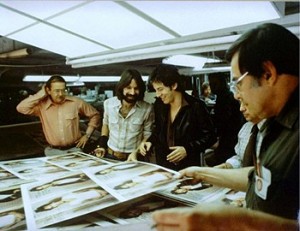
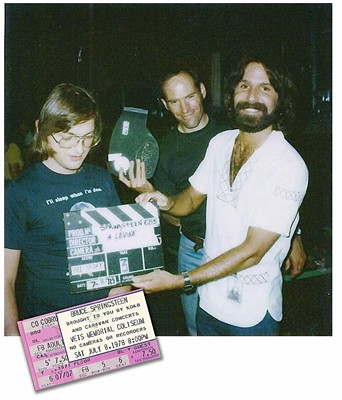
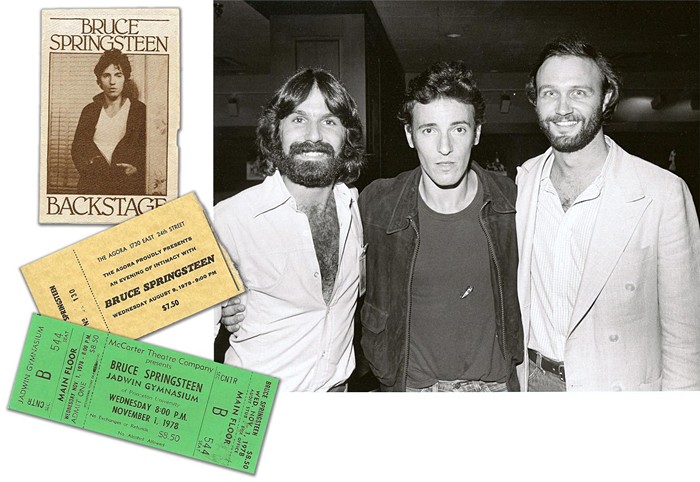







Pingback: Bruce Springsteen Explores a Time of Darkness | Darkness Album